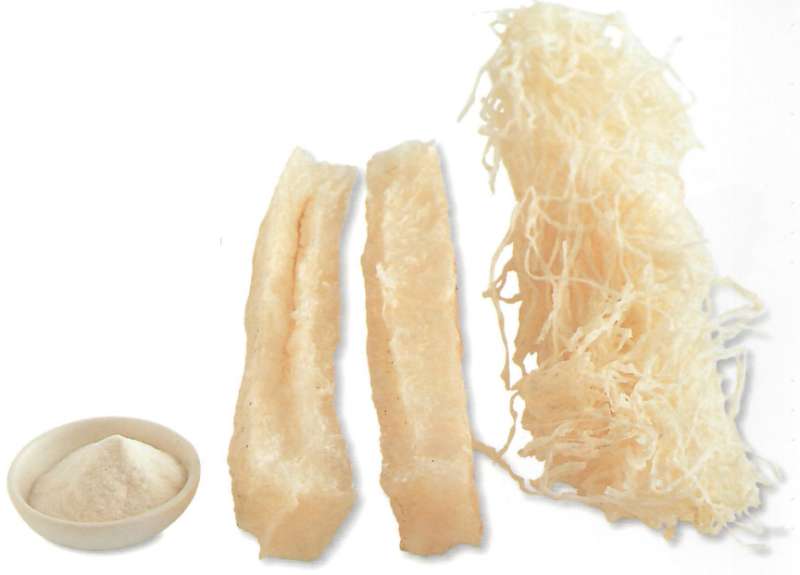Agar-Agar
Chinese: Dongfen; Yangcai; Japanese: Kanten.
This is the gelatinous substance obtained from the seaweed known as "rock-flower vegetable" in Chinese. Available from Thai or oriental stores as long dried strips or as a fine white powder sold in tubs, it is a very popular setting agent, especially for vegetarians seeking an alternative to gelatine.

Aroma and flavour
Agar-agar has no aroma and is entirely flavourless, but will absorb the seasonings with which it is prepared for serving.
Culinary uses
Asian cooks sometimes use soaked strips of agar-agar in a salad, just as they would any other form of seaweed, but it is more often used as a setting agent, usually to make sweet jellies.
Preparation and cooking techniques
To use agar-agar in a salad, soften the strips in lukewarm water for about 20-25 minutes, then drain and dry them on some kitchen paper. Separate the strips and cut them into short lengths. Combine the agar-agar with the other salad ingredients, add a dressing and toss to mix.
To use agar-agar to set a jelly, dissolve it slowly in water over a very low heat, which may take up to 10 minutes. Heat some milk and sugar, with a flavouring such as almond essence, in a separate pan, then mix with the agar-agar solution. Leave the mixture to cool, then chill in the fridge for 3-4 hours until set. Agar-agar varies in strength, so check the packaging to see how much you should use. As a guide, 5ml / 1 tsp powder will set 300mI / ½ pint / 1¼ cups of liquid.
Storage
Agar-agar, both in strips and in the powdered form, will keep almost indefinitely if stored in a cool, dry place.